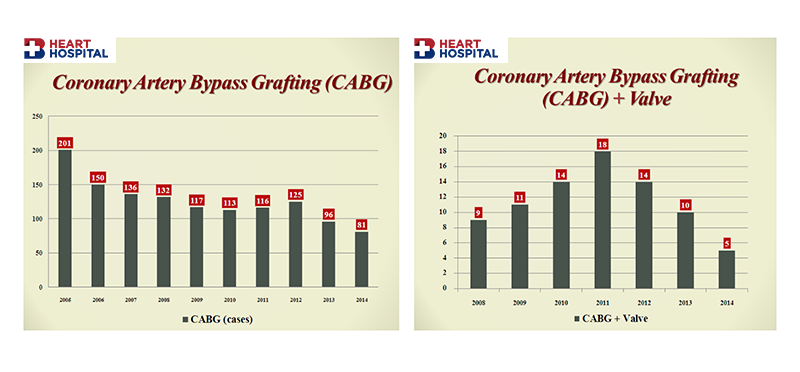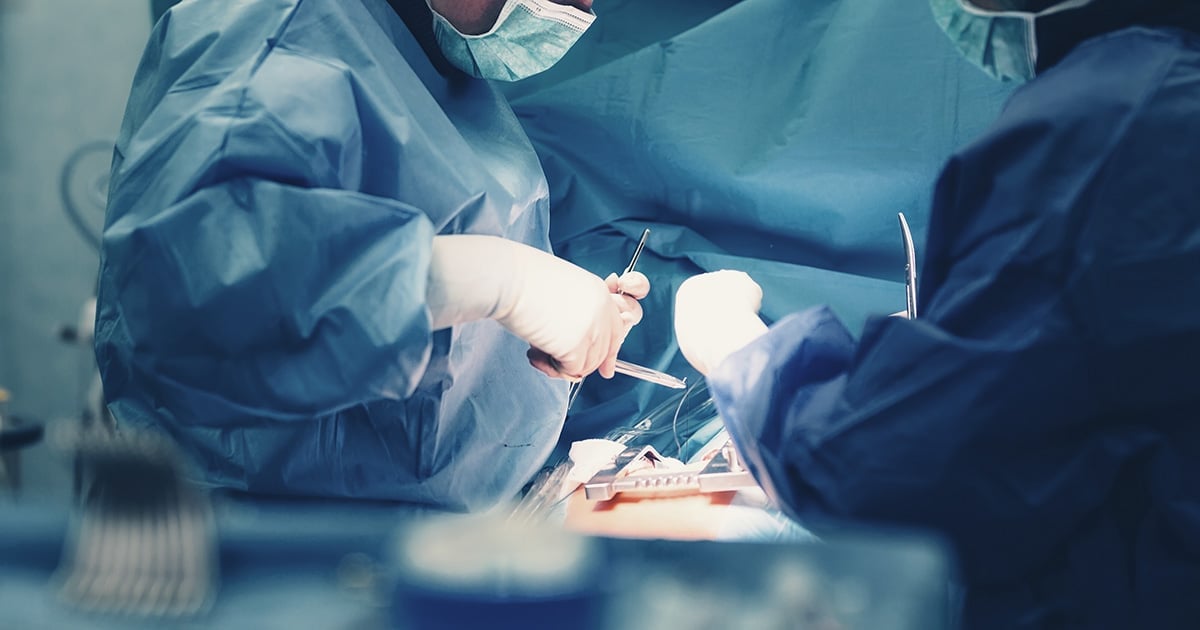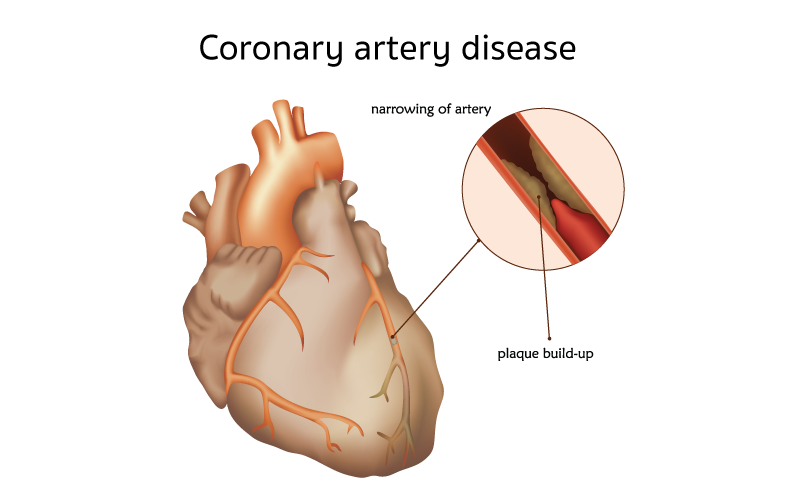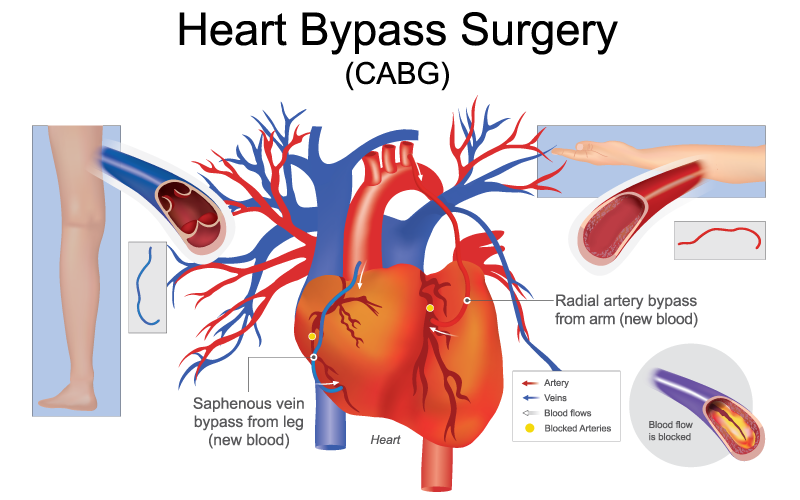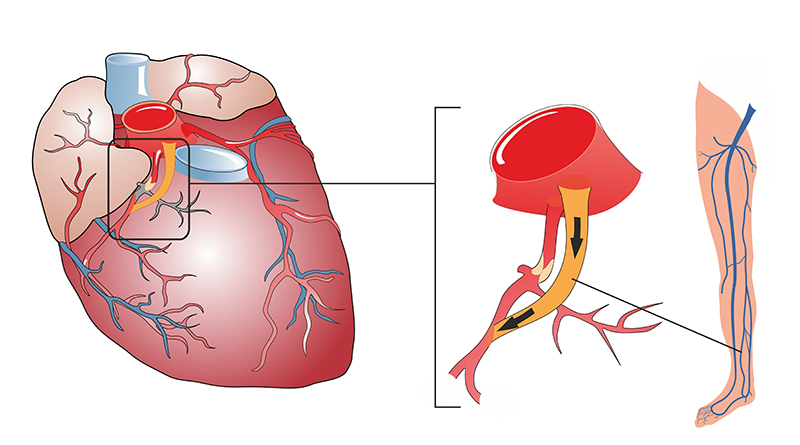CABG-Coronary Artery Bypass Grafting
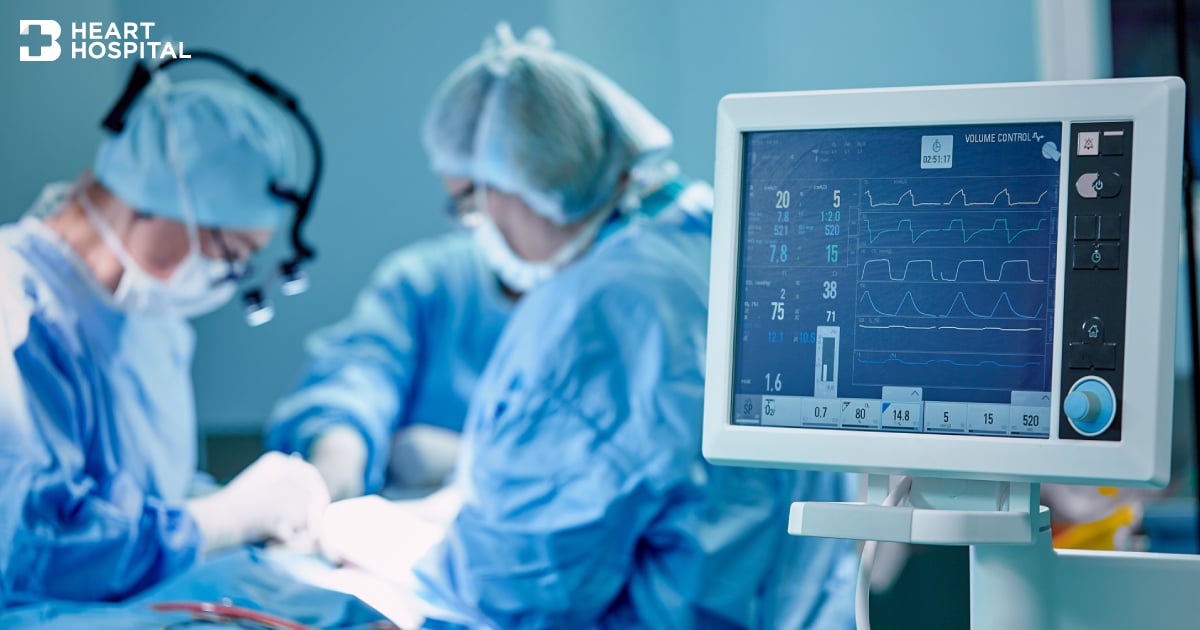
treatment
table of contents
Coronary Artery Disease
What is Coronary Artery Bypass Grafting (CABG)?
Indications
Alternative treatment
Which Blood Vessels Are Used for Coronary Grafts?
Types of CABG
Outlook
Preoperative Diagnostic Tests
What to Expect Before Coronary Artery Bypass Grafting?
What to Expect During Coronary Artery Bypass Grafting?
What to Expect After Coronary Artery Bypass Grafting?
Ongoing Care
What Are the Risks of Coronary Artery Bypass Grafting?
CABG At Bangkok Heart Hospital
Coronary Artery Disease
Coronary artery disease (CAD) is the narrowing of the coronary arteries (the blood vessels that supply oxygen and nutrients to the heart muscle), caused by a buildup of fatty material within the walls of the arteries. This process causes the inside of the arteries to become narrowed, limiting the supply of oxygen-rich blood to the heart muscle. To better understand how coronary artery disease affects the heart, a review of basic heart anatomy and function is helpful.
The heart is basically a pump. The heart is made up of specialized muscle tissue, called the myocardium. The heart’s primary function is to pump blood throughout the body, so that the body’s tissues can receive oxygen and nutrients. Like any pump, the heart requires fuel in order to work. The myocardium requires oxygen and nutrients, just like any other tissue in the body. The blood that passes through the heart’s chambers is only passing through on its trip to the rest of the body. This blood does not give oxygen and nutrients to the myocardium. The myocardium receives its oxygen and nutrients from the coronary arteries, which lie on the outside of the heart.
What is Coronary Artery Bypass Grafting (CABG)?
Coronary artery bypass grafting or “CABG” (often pronounced “cabbage”).
During coronary artery bypass graft surgery, a blood vessel is removed or redirected from one area of the body and placed around the area or areas of narrowing to “bypass” the blockages and restore blood flow to the heart muscle. This vessel is called a graft. These substitute blood vessels can come from your chest, legs, or arms. The surgeon will decide which graft(s) to use depending on the location of your blockage, the amount of blockage, and the size of your coronary arteries.
Indications
The goals of CABG may include:
- Improving your quality of life and reducing angina and other coronary artery disease symptoms.
- Allowing you to resume a more active lifestyle.
- Lowering the risk of a heart attack.
- Improving the pumping action of your heart if it has not been getting enough oxygen. Improving your chance of survival.
Alternative treatment
- Medical treatment, lifestyle change.
- Coronary angioplasty (PTCA)
- Percutaneous coronary intervention (PCI) and coronary stenting.
There are guidelines that will assist your doctor to choose the appropriate treatment for you.
Which Blood Vessels Are Used for Coronary Grafts?
During CABG, a healthy artery or vein from the body is connected, or grafted, to the blocked coronary artery. The grafted artery or vein bypasses (goes around) the blocked portion of the coronary artery. This creates a new path for oxygen-rich blood to flow to the heart muscle. It is common for three or four coronary arteries to be bypassed during surgery.
- Arterial graft. Arterial graft lasts longer than the saphenous vein graft.
- Internal mammary arteries. This artery is located in the chest. This artery is routinely used particular to the important anterior coronary artery.
- Radial artery. The radial artery is in your forearm.
- Gastroepiploic artery. The gastroepiploic artery of the stomach are less commonly used for grafting.
- Saphenous veins. These veins are removed from your leg. Minimally invasive saphenous vein removal may be performed and results in less scarring and a faster recovery.
Types of CABG
- Traditional Coronary Artery Bypass Grafting or On Pump CABG. During the surgery, the chest bone is opened to access the heart. A heart-lung bypass machine keeps blood and oxygen moving throughout the body during surgery while the surgeon is working on a still heart.
- Off-Pump Coronary Artery Bypass Grafting (OPCAB) The chest bone is opened to access the heart. However, the heart isn’t stopped, and a heart-lung bypass machine isn’t used. Using special device to stabilize the heart motion only at a small area of surgery. Off-pump CABG sometimes is called beating heart bypass grafting. Bangkok Heart Hospital performs OPCAB the most.
- Minimally Invasive Direct Coronary Artery Bypass Grafting Small cuts are made on the left side of the chest between the ribs. This type of surgery is limited to bypass blood vessels at the front of the heart.
- Uncommonly type
- MIDCAB procedure.
- Port-access coronary artery bypass procedure
- Robot-assisted technique
Outlook
The results of CABG usually are excellent. The surgery improves or completely relieves angina symptoms in most patients. Although symptoms can recur, many people remain symptom-free for as long as 10 to 15 years. CABG also may lower your risk of having a heart attack and help you live longer
You may need repeat surgery or other alternative treatments (see above) if blockages form in the grafted arteries or veins or in arteries that weren’t blocked before. Taking medicines and making lifestyle changes as your doctor recommends can lower the risk of a graft becoming blocked.
Preoperative Diagnostic Tests
Prior to surgery you may need these diagnostic tests to complete evaluation.
- EKG (Electrocardiogram)
- Echocardiography
- Stress Test
- Coronary CT scan
- Coronary Angiography

What to Expect Before Coronary Artery Bypass Grafting?
Your doctor will tell you how to prepare for CABG surgery. He or she will advise you about what you can eat or drink, which medicines to take, and which activities to stop (such as smoking). You’ll likely be admitted to the hospital on the same day or the day before surgery.
What to Expect During Coronary Artery Bypass Grafting?
Coronary artery bypass grafting (CABG) requires a team of experts. A cardiothoracic surgeon will do the surgery with support from an anesthesiologist, perfusionist (heart-lung bypass machine specialist), other surgeons, and nurses.
When the bypass surgery is done the surgeon will use wire to close your chest bone. The wire will stay in your body permanently. After your chest bone heals, it will be as strong as it was before the surgery.
What to Expect After Coronary Artery Bypass Grafting?
Recovery in the Hospital
After surgery, you may be extubated (if the condition is stable) before arriving at intensive care (ICU) where you will stay for 1 or 2 days.
After you leave the ICU, you’ll be moved to a less intensive care area of the hospital for 3 to 5 days before going home.
These are average timing. There will be individual patient difference.
Recovery at Home
Your doctor will give you specific instructions for recovering at home, especially concerning:
- How to care for your healing incisions.
- How to recognize signs of infection or other complications.
- When to call the doctor right away.
- When to make follow up appointments.
You also may get instructions on how to deal with common side effects from surgery. Side effects often go away within 4 to 6 weeks after surgery, but may include:
- Discomfort or itching from healing incisions.
- Swelling of the area where an artery or vein was removed for grafting.
- Muscle pain or tightness in the shoulders and upper back.
- Fatigue (tiredness), mood swings, or depression.
- Problems sleeping or loss of appetite.
- Constipation.
- Chest pain around the site of the chest bone incision (more frequent with traditional CABG).
Full recovery from traditional CABG and OPCAB may take 6 to 12 weeks or more. Less recovery time is needed for nontraditional CABG.
Your doctor will tell you when you can start physical activity again. It varies from person to person, but there are some typical timeframes. Most people can resume sexual activity within about 4 weeks and driving after 3 to 8 weeks.
Returning to work after 6 weeks is common unless your job involves specific and demanding physical activity. Some people may need to find less physically demanding types of work or work a reduced schedule at first.
Ongoing Care
Care after surgery may include periodic checkups with doctors. During these visits, tests may be done to see how your heart is working. Tests may include EKG (electrocardiogram), stress testing, echocardiography, and cardiac CT.
CABG is not a cure for coronary heart disease (CHD). You and your doctor may develop a treatment plan that includes lifestyle changes to help you stay healthy and reduce the chance of CHD getting worse.
Lifestyle changes may include making changes to your diet, quitting smoking, doing physical activity regularly, and lowering and managing stress.
Your doctor also may refer you to cardiac rehabilitation (rehab). Cardiac rehab is a medically supervised program that helps improve the health and well-being of people who have heart problems.
Rehab programs include exercise training, education on heart healthy living, and counseling to reduce stress and help you return to an active life. Doctors supervise these programs, which may be offered in hospitals and other community facilities. Talk to your doctor about whether cardiac rehab might benefit you.
Taking medicines as prescribed also is an important part of care after surgery. Your doctor may prescribe medicines to manage pain during recovery; lower cholesterol and blood pressure; reduce the risk of blood clots forming; manage diabetes and hypertension; or treat depression.
What Are the Risks of Coronary Artery Bypass Grafting?
As with any type of surgery, coronary artery bypass grafting (CABG) has risks. The risks of CABG include:
- Wound infection and bleeding
- Reactions to anesthesia
- Fever
- Pain
- Stroke, heart attack, or even death
- Memory loss and other issues, such as problems concentrating or thinking clearly, might occur in some people and may be improve within 6 months
In general, the risk of complications is higher if you have other diseases or conditions, such as diabetes, kidney disease, lung disease, or peripheral arterial disease (P.A.D.) or surgery is carried out emergently.
Please discuss with your surgeon about your risk of surgery.
CABG At Bangkok Heart Hospital
We have extensive experience in OPCAB or CABG with beating heart, to avoid using cardiopulmonary bypass machine, and routine blood transfusion. Up to 90 % of CABG at Bangkok heart hospital were done with this technique.
